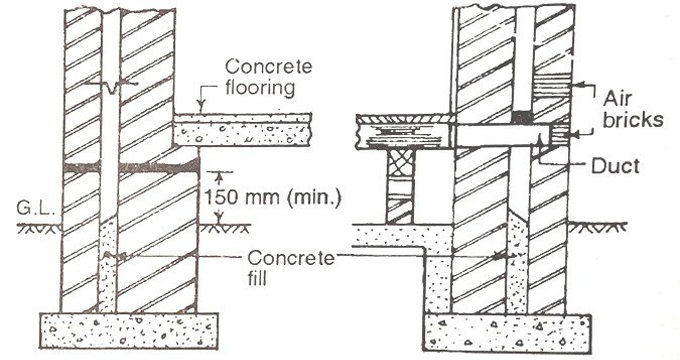
Construction Process Of Cavity Wall and its benefits
Cavity walls are built up with two individual walls to be used for a single wall containing some space or cavity among them. These two separate walls are known as leaves of cavity wall. The inner wall is described as internal leaf as well as outer wall as external leaf. Cavity wall is also called as Hollow wall.
For non-load bearing cavity wall, two leaves are of equal thickness or sometimes internal leaf with more thickness is provided. The cavity size should be in between 4 to 10cm. There should be minimum 10mm thickness with the internal and external leaves. The two leaves are interrelated with metal ties or links.
Benefits of Cavity Walls: Given below some benefits of cavity wall as compared to solid walls -
? Cavity walls provide superior thermal insulation compared with solid walls owning to the available space among two leaves of cavity walls that contains sufficient air and lessens transfer of heat into the building from outside.
? Cavity walls are cost-effective as compared to solid walls.
? Due to hollow space among leaves, moisture content in external atmosphere can?t enter into the building. So, they can easily resist dampness.
? They can also be used as excellent sound insulators.
? They also minimize the weights on foundation as a result of their smaller thickness.
? Outer Efflorescence is also prohibited.
Construction of Cavity Walls: Usually, no footings under cavity wall are required rather a solid concrete base is arranged on which cavity wall is built up in center. Two leaves are developed like normal masonry, but lowest cavity should exist among them. The cavity is occupied with lean concrete containing some slope at top up to few centimeters over ground level.
There are weep holes for external leaf at bottom with a spacing of 1 m. Normal bricks are applied for inside leaf and facing bricks are applied for external leaf. Diverse masonry is also utilized for cavity wall leaves. The leaves are attached with metal ties or wall ties, which are usually formed with steel and contain good resistance capacity against rust.

Ref. & Image Courtesy: theconstructor.org
The utmost horizontal spacing of wall ties is 900mm and vertical spacing is 450mm. The wall ties are arranged in an efficient manner to avoid bearing any moisture from external leaf to inner leaf.
Stretcher bond is used for half brick thickness leaves. English bond or Flemish bonds type constructions are arranged toward one brick thickness or more thickness. At the time of placing bricks, proper examination should be undertaken so that the cavity is not filled with cement mortar.
To resist falling of mortar in cavity, wooden battens are arranged in the cavity with proper dimensions. These battens are supported on wall ties and each time the height of next wall tie location is attained, then the battens are detached with wires or ropes and wall ties are provided.
Two leaves are built up at the same time. Spacing is invariable and it is achieved by pre-establishing the location of wall ties. Damp proof course is arranged for two leaves individually. For doors and windows, weep holes are arranged over the damp proof course.

